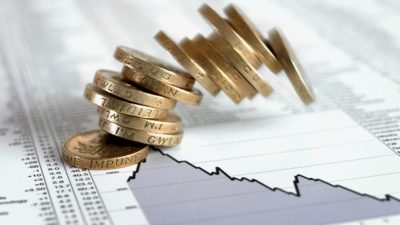In the dynamic world of investing, I’m always on the lookout for companies positioned to capitalise on growing trends. With the UK’s energy demand climbing rapidly, SSE (LSE: SSE), one of the nation’s leading energy companies, has my attention. But is this FTSE 100 component poised for growth, or are there hidden risks? Let’s take a closer look at the SSE share price.
Solid growth
The firm has been outperforming the market recently, with its share price climbing an impressive 16% over the past year. This significantly outpaces the broader UK market, which rose 11.1% in the same period. However, in the sector, history has shown us consistently that past performance doesn’t guarantee future results, so let’s delve deeper into the company’s fundamentals.
A look at the firm’s financial statements reveals a robust picture. In the past 12 months, the company reported earnings of £1.71bn on revenues of £10.46bn. With a healthy net profit margin of 16.36%, it’s evident that management has been effectively managing its operations and costs.
Should you invest £1,000 in Jet2 Plc right now?
When investing expert Mark Rogers has a stock tip, it can pay to listen. After all, the flagship Motley Fool Share Advisor newsletter he has run for nearly a decade has provided thousands of paying members with top stock recommendations from the UK and US markets. And right now, Mark thinks there are 6 standout stocks that investors should consider buying. Want to see if Jet2 Plc made the list?
What I think is particularly intriguing for long-term investors is the growth forecast. Management projects adjusted earnings per share of 175p to 200p by FY27, representing a compound annual growth rate (CAGR) of 13-16% over five years. This ambition suggests confidence in the strategy, and a good degree of certainty that demand is going to continue growing rapidly.
From a valuation perspective, the shares appear to be reasonably priced. Trading at a price-to-earnings (P/E) ratio of 11.9 times, it could represent good value. This view seems to be shared by analysts, with the average price target suggesting 18.13% growth from current levels.
A sector growing aggressively
One of the primary reasons I’m keeping a close eye on the company is its strong commitment to building renewable energy infrastructure. As the UK progresses towards its net-zero targets, companies with significant renewable energy portfolios are well-positioned to benefit. SSE’s recent involvement in building transmission infrastructure in the highlands, and a 2GW offshore wind tender in the Netherlands, demonstrates the scale of its ambitions.
This focus on renewables could prove to be a significant advantage as energy demand continues to rise. The increasing adoption of electric vehicles and the shift towards electrification in heating systems are likely to drive substantial growth in clean energy demand.
Risks ahead
However, it’s crucial to acknowledge the potential risks. The firm carries a high level of debt, which could become problematic if interest rates remain high. Additionally, there has been significant insider selling over the past three months, although this could be unrelated to company performance.
It’s also worth noting that the company’s dividend history has been somewhat inconsistent. While the current yield of 3.2% is attractive, especially with a reasonable payout ratio of 38%, investors should be aware that dividends in the energy sector can be highly cyclical.
One to watch
In my assessment, SSE is certainly a company worth monitoring closely. The company’s focus on renewable energy, combined with rising UK energy demand, positions it well for potential future growth. However, the high debt levels and recent insider selling are factors that I’d say require careful consideration.
So with the UK’s energy demand showing no signs of abating, SSE shares will be on my watchlist.








